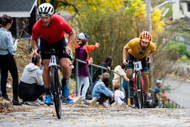Dirty Dozen: Pittsburgh's Legendary Hill Challenge
Each year, cyclists and fans gather for one of the most unique challenges in American cycling: the Dirty Dozen. It is a race known for its punishing climbs and high-energy spectators. The event blends tradition, community, and sheer willpower. Since its start in the early 1980s, it has grown into a defining piece of Pittsburgh’s cycling identity. This year marks the 42nd running, and the spirit is unchanged.
The History of the Dirty Dozen
The Dirty Dozen was created in 1983 by Danny Chew, a Pittsburgh native and lifelong endurance cyclist. What began as a fun ride among friends has grown into a nationally recognized event that draws riders from across the country. Its purpose has never been just about racing. It is about testing endurance, spirit, and determination on the city’s toughest hills.
Who Is Danny Chew?
Danny Chew is an ultramarathon cyclist best known by the nickname “Million Mile Man.” He earned the name through his lifelong goal of riding one million miles, a feat that would equal circling the Earth more than 40 times. Chew is meticulous in recording his mileage and is admired for his unmatched tolerance for long, grueling rides.
In 2016, as he was nearing 790,000 miles, he suffered a serious crash while cycling that left him paralyzed from the chest down. Even so, he has remained an active voice in the cycling community, continuing to inspire with his determination and his role in shaping Pittsburgh’s cycling culture. The Dirty Dozen stands as one of his greatest legacies, a local event that became a national test of grit.
The Hills That Make It Famous
The Dirty Dozen covers roughly 50 miles, which is not especially long by endurance standards. What makes it notorious is how those miles are stacked with thirteen brutally steep climbs. Canton Avenue is the icon, a narrow brick wall that approaches 37% grade and tests balance as much as power. Other ascents like Rialto Street and Sycamore add to the cumulative fatigue, turning a medium-length route into one of the hardest days you can have on a bike in Pittsburgh.
How the Dirty Dozen Works
This race has a format unlike any other:
• Riders must climb each hill in one continuous effort. If you stop, lose balance, or put a foot down, you must descend to the bottom and start the hill again.
• After every hill, the group regathers at the top before moving on, which adds a social, community feel even in the middle of the challenge.
• Points are awarded based on placement at the top of each hill. The first rider earns the most, with points decreasing down the order.
• To be recognized as a “finisher,” you must successfully complete all thirteen hills under these rules.
For some riders, the goal is to win the competition. For many more, the real victory is simply finishing. Conquering every hill and earning the right to say you completed the Dirty Dozen is a badge of honor.
What the Race Means to Pittsburgh
This race reflects the spirit of the city because it is built on what defines Pittsburgh. The route climbs neighborhood by neighborhood over steep streets that were never meant for easy travel. Riders and spectators show up anyway, not for comfort but for the challenge and community. Volunteers keep things moving, neighbors cheer from front steps and sidewalks, and strangers push each other to the top. It is blue-collar effort, local pride, and a love of doing hard things together.
Tips for Riders and Spectators
Riders should practice repeated steep efforts and learn to pace the first half so there is something left for the final climbs. Smooth cadence, good traction, and staying relaxed when the front wheel lifts can make or break an attempt. Spectators get the best views on the steepest pitches, especially Canton Avenue. Arrive early, respect residents and course marshals, and leave the lane open so riders can earn their way to the top.
The Official Jersey
Aero Tech Designs is proud to support this tradition with the official Dirty Dozen jersey. This jersey celebrates Pittsburgh’s legendary cycling challenge and the grit it takes to conquer thirteen steep hills. It blends performance with heritage so it feels right on race day and every hard training climb. The charcoal body sets a clean base, and the warm stripe band and hill silhouette across the chest nod to the city’s terrain and cycling culture.
Ride With Purpose
50% of every sale goes back to Danny Chew and the Dirty Dozen. Your purchase helps support the event and carry its legacy to future riders.

